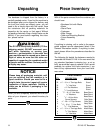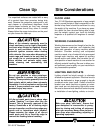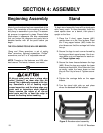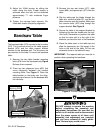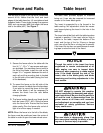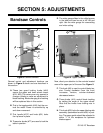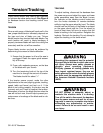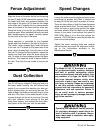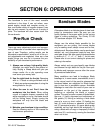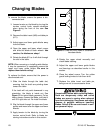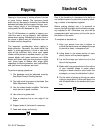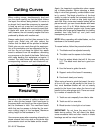
G1148 15" Bandsaw -15-
Tension/Tracking
TRACKING
To adjust tracking, disconnect the bandsaw from
the power source and adjust the upper and lower
guide assemblies away from the blade. Loosen
the locknuts on the tracking control knobs and
turn the knobs clockwise or counter-clockwise
while turning the upper wheel by hand. The blade
should track so the body of the blade is centered
on the upper wheel and tire. Turn the wheel by
hand at least three full turns to ensure that the
blade is tracking in its final position. Retighten the
locknuts. Recheck the tracking. Do not attempt to
adjust the tracking on the lower wheel.
DO NOT attempt to assemble, adjust, or
maintain this machine while it is running.
Turn off the switch, disconnect the bandsaw
from its power source and wait for all mov-
ing parts to come to a complete stop before
attempting any adjustments or mainte-
nance. Failure to do so could result in seri-
ous injury.
Proper blade tension and tracking are important
for optimum bandsaw performance. See Figure 9
for bandsaw tension and tracking control loca-
tions.
TENSION
Since a wide range of blades will work well in this
saw, proper blade tension ultimately depends on
the type and size of blade you use. Thinner
blades require less tension than wide blades. Too
much tension will result in blade breakage. A
properly tensioned blade will track the cutting line
accurately and the cut will be smoother.
Proper blade tension can best be achieved by
determining the amount of blade deflection:
1. Ensure that the power is off and the saw is
unplugged. Raise the upper guide assem-
bly all the way.
2. Press, with moderate pressure, on the face
of the blade with your thumb.
3. Turn the tensioning knob at the top of the
machine to change the amount of tension.
The blade should flex about
1
/4".
If the tension seems correct, make the other
adjustments to the saw (aligning guides, tracking,
speed, table and fence) and test run it. If the
blade is not cutting properly, the tension may be
incorrect and you’ll need to readjust the tension.
Remember to reduce the blade tension when the
saw will not be in use, this will help to prevent pre-
mature wear or breakage of the blade and/or rub-
ber tires.
Operating this equipment has the potential
to propel debris into the air which can cause
eye injury. Always wear safety glasses or
goggles when operating equipment.
Everyday glasses or reading glasses only
have impact resistant lenses, they are not
safety glasses. Be certain the safety glasses
you wear meet the appropriate standards of
the American National Standards Institute
(ANSI).




